XFX’s Radeon HD 7970 Black Edition Double Dissipation: The First Semi-Custom 7970
by Ryan Smith on January 9, 2012 6:00 AM ESTGame Performance: Crysis, Metro, DiRT, Shogun, & Batman
As the 7970 BEDD is a factory overclocked card it has a leg up in performance on the reference 7970, with the specific advantage depending on the game and whether it benefits more from the 8% core overclock or the 4% RAM overclock. Since this is architecturally identical to the reference 7970 we won’t make any drawn out conclusions, but it’s easy enough to see the benefits of higher clockspeeds on a 7970 card.
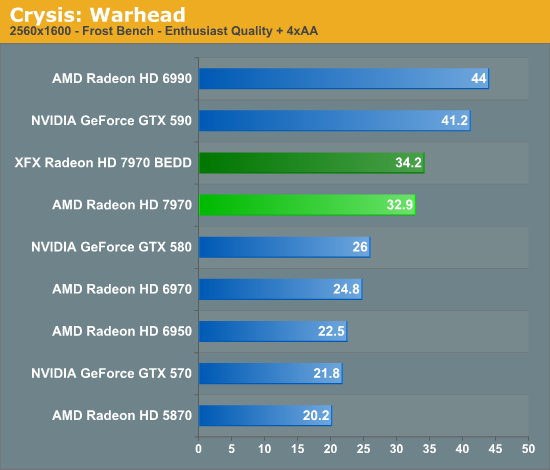
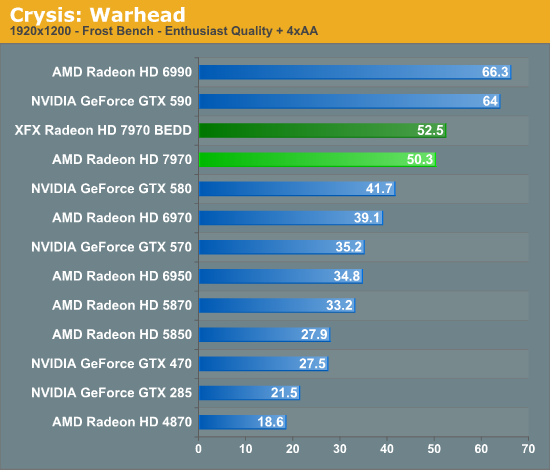
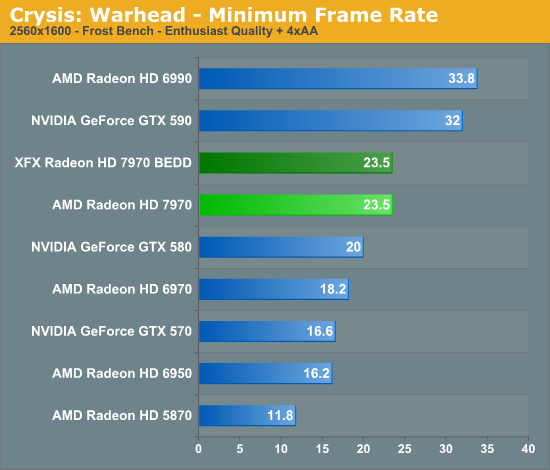

The BEDD leads the reference 7970 by about 4% in Crysis, more closely trending the memory clockspeed difference than the core clockspeed difference.
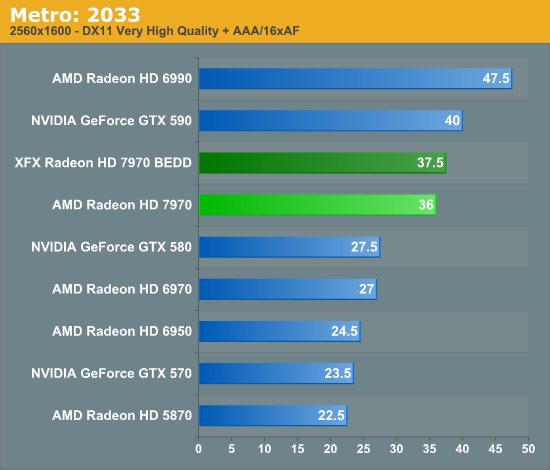
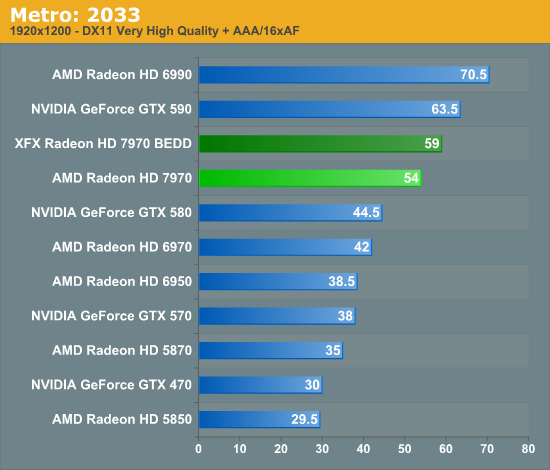
With Metro the story is similar; at 2560 we’re seeing a 4% gain. At 1920 however that gain is closer to 8%, which may mean Metro is teetering on being memory bandwidth limited at the highest resolutions.
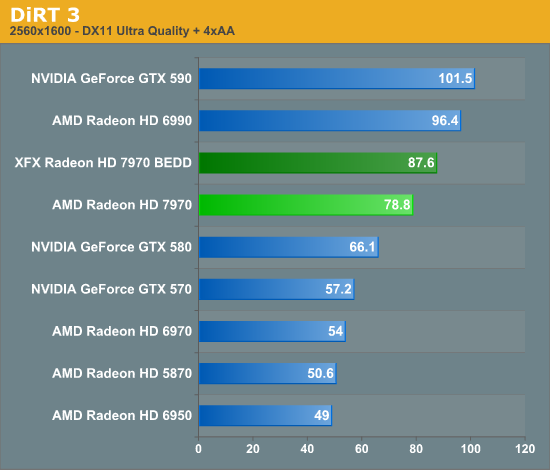
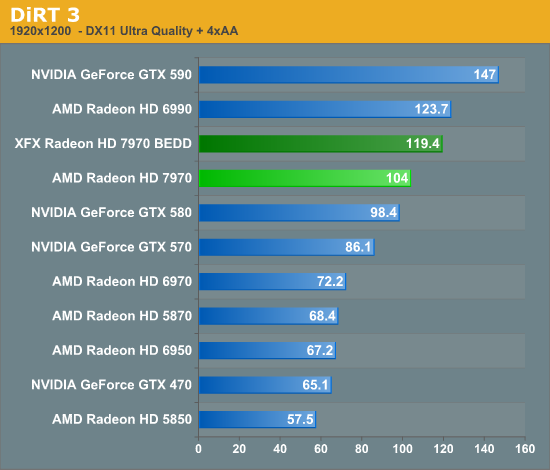
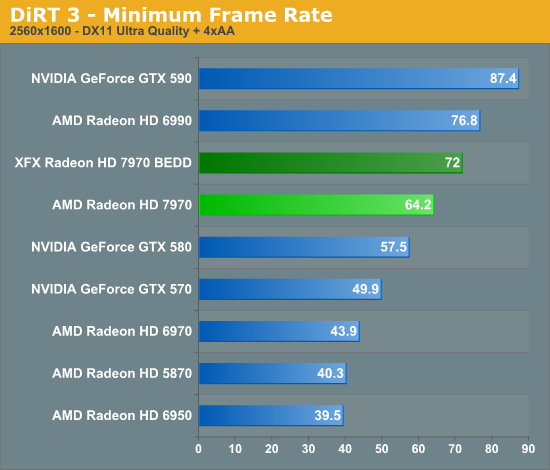
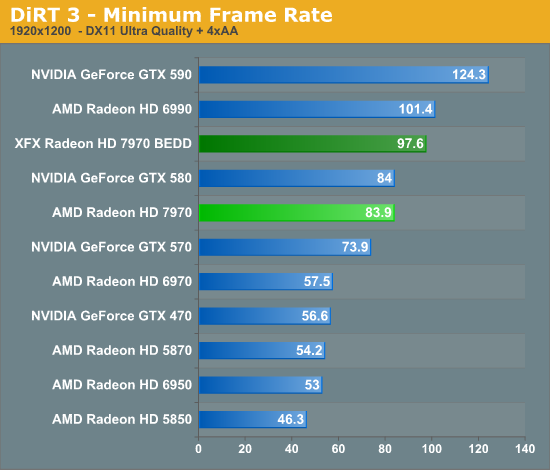
DiRT 3’s performance gains almost strictly mirror the increase in the core clock, if not lead it by a bit. For this reason DiRT 3 is clearly the most GPU limited title in our lineup, and the title to benefit the most from XFX’s factory overclock.
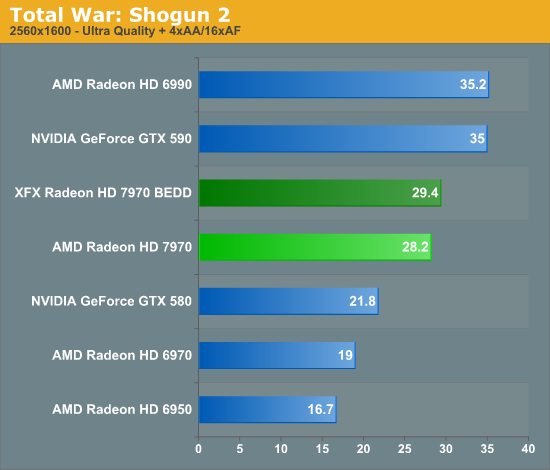
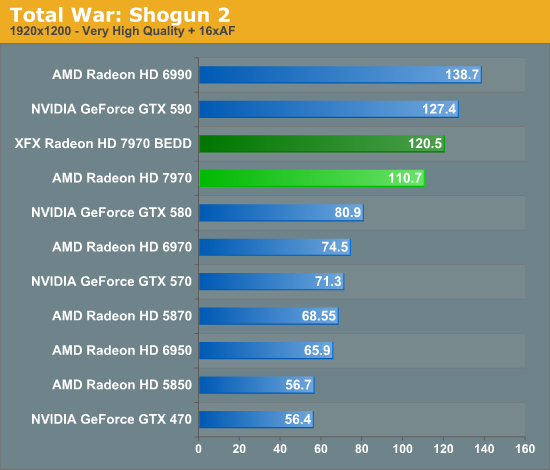
Shogun is much like Metro: around 4% at 2560, and around 8% at 1920, indicating that it too may be reaching the limits of the 7970’s memory bandwidth.
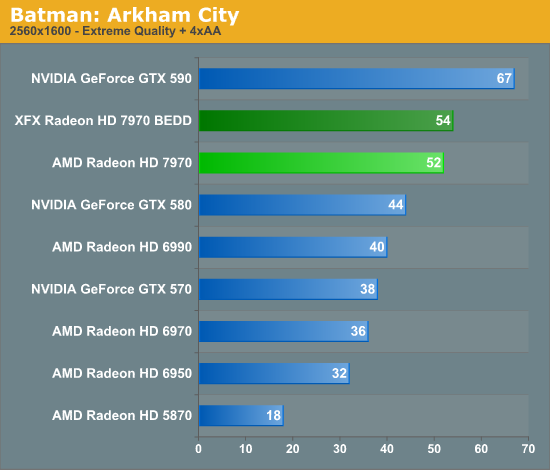
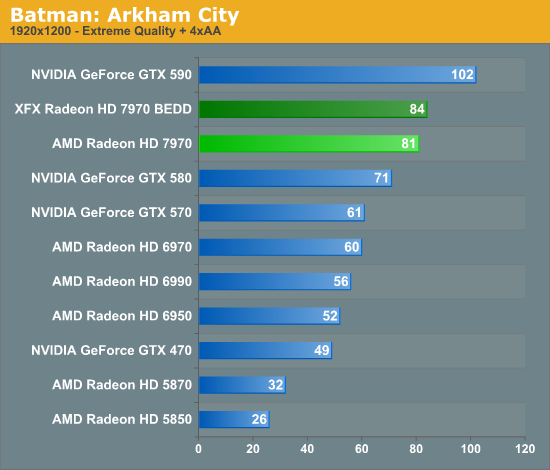
Batman meanwhile is far more consistent. The gains from XFX’s overclock are just under 4%, almost exactly matching the memory bandwidth difference.










93 Comments
View All Comments
Duraz0rz - Monday, January 9, 2012 - link
I don't think GCN, a completely new architecture, would qualify as an "old graphics solution".Morg. - Tuesday, January 10, 2012 - link
1. yes no reason to go further than a good 5850 right now . (I still have a 4850 and it's just gone into the 'bit too shitty' zone for me)2. 6950 murders a 5850, and the new 7-series does the same to the 6-series.
3. The architecture just changed on AMD side, towards more of a vector processor, just like nVidia's Fermi, this is a good thing for compute and the future of IT in general (heterogeneous core blabla and stuff). (by the way, GCN is not all that new, it's just an adaptation of an older design)
4. Obviously, all that power is becoming a bit useless to gamers since game devs have shifted most of their focus to consoles, and the last big PC game dev (blizzard) focuses on delivering "playable" games for everyone, thus limiting the computing requirements.
5. This is 2011, You can expect that shading and tesselation will eventually enable games to look as good as your hardware can make them, with graphics settings limited to how many FPS minimum and average you want. This is especially true since future consoles will have some of that . and the next round even more.
I'd expect that kind of stuff to be mainstream around 2013 - 2014, so if you're going to keep your new box for 3 years, why not ... (on the other hand, the best graphics board for money currently still is the 6950 of course...).
And .. the tiny bit of truth : yes the gtx 580 is what the 480 was meant to be, with quite a few glitches fixed. It's obviously not meant for a 40nm process (500+ Watts in basic overclocking is a bit much) and that was part of nVidia's strategy : develop fermi on 40 nm then port it to its intended size : 28nm.
AMD waited for 28nm and I believe that was the best choice, seeing how they managed to deliver (much more easily than Fermi by the way .. which had major issues for its first release).. Just looking at the power requirements for the 7970 tells the whole story . That thing is downclocked to hell just to remain under 300 Watts ...
theprodigalrebel - Monday, January 9, 2012 - link
Should come with a warning: No motorboating the cardIceDread - Tuesday, January 10, 2012 - link
I purchased XFX radeon hd 5970 a couple of years ago. XFX are inferior when it comes to overclocking. They were more restrictive and values had to be adjusted each restart even if I remember correctly.The result was that everyone who wanted to overclock their xfx cards installed firmware from other companies to successfully be able to overclock their cards.
piroroadkill - Tuesday, January 10, 2012 - link
This was true for me, too. I had an XFX 4890 (which is dying now, despite running at stock for a long time).It had a custom (and worse) vrm section of the board, and didn't overclock worth a single damn. Those promises of 1GHz 4890s? Haha, not if you owned one of these.
Mjello - Tuesday, January 10, 2012 - link
Is it possible to control the fan manually. That would fix the idle noice easilywifiwolf - Tuesday, January 10, 2012 - link
The article stated it's already at its minimum rate since it's using the same controller as the reference card.fausto412 - Tuesday, January 10, 2012 - link
Can we get more detail info on this newly added tech?I read the AMD whitepaper buy I am curious as to real world impact of it.
Ryan Smith - Tuesday, January 10, 2012 - link
Actually PowerTune is not new. It was first introduced on Cayman (6900 series); the Tahiti (7900 series) implementation is no different.http://www.anandtech.com/show/4061/amds-radeon-hd-...
dcompart - Tuesday, January 10, 2012 - link
It'd be nice to see the overclock performance of a standard cooled card for comparison. I'd like to be able to balance the price justification not only on noise but performance. The comparison between a regular 7970 against a stock overclocked card doesn't persuade me, then it irritates me further to see the XFX overclocked further, without even playing devils advocate and showing the overclock potential of a regular 7970 with standard cooling. It doesn't make want to buy the Overclocked card, it makes me feel deceived!